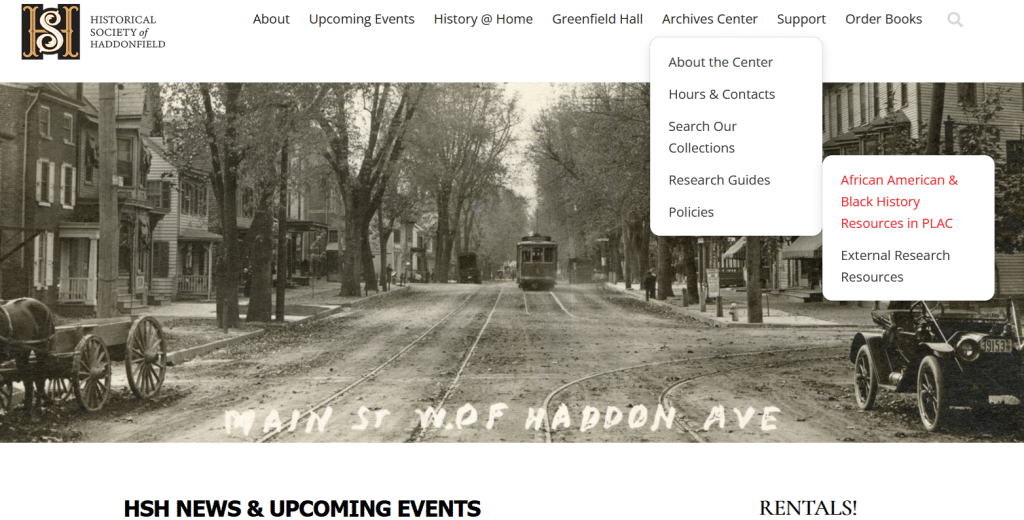About Our Guide to African American and Black History Resources
It has been nearly a year since we launched our Guide to African American and Black History Resources in the Patricia Lennon Archives Center. We thought that now would be an excellent opportunity to walk members and other researchers through the guide.
You can find the guide in the main menu—follow the links for the Archives Center and then the Research Guides, as shown in this picture:
In structuring the Guide, we decided to use “Accordion Blocks”—clicking on one of the section titles expands the section to reveal its contents. From a coding and design perspective, these accordion blocks are a little fiddly to work with in WordPress. However, we wanted to keep all the information on one page and avoid overwhelming users with a wall of text. The blocks make it easier to navigate through the list.
The first section in the guide discusses reparative description—a term that you may not have encountered before.
The terms that we use to describe archival, library, and museum items are inevitably embedded in their times. Sometimes, these descriptive terms reflect historical (and current) injustices and prejudices—and, often, these descriptive terms continue to be discriminatory and perpetuate historical injustices. In recent years, there has been a movement in galleries, libraries, archives, and museums to review and, where necessary, update the metadata that we use to describe and make collection items more easily findable.
Working within the National Archives’ guidelines, we are reviewing (and updating when necessary) the descriptive language that we use in our catalogs. We are not deleting the old terms—after all, the history of the catalog and item records can tell researchers a lot about the history of the Historical Society of Haddonfield and changing practices in archives! Instead, we have moved the deprecated terms to a non-public part of the record.
We divided the main body of the guide into sections based on the type of material that we have. So, the guide has sections for: vertical files (notes on previously researched topics at PLAC); archival materials (the unique material in our collections such as personal papers, records, and photographs); pamphlets and ephemera (small run booklets and printed items that were not intended to be kept such as tickets and ration cards); and books, serials, and other traditional publications that you might find in a library. The section on archival materials actually required further subdivision and includes subsections on maps, oral histories, cemetery records, church records, and more.
Finally, we include a section for links to external resources and collections that might help contextualize our collection materials.
This is by no means the final version of the guide. We plan to keep developing it, adding new items as our archival collections grow or as we discover news aspects of old holdings that connect them to African American and Black History. Please do take a look at the guide—and, if there is anything that you would like to see in person, don’t hesitate to email the Archivist to schedule a visit.

